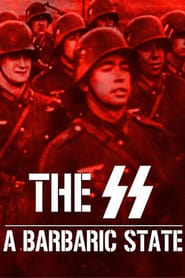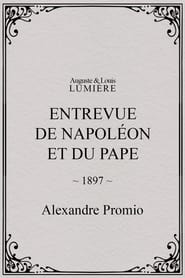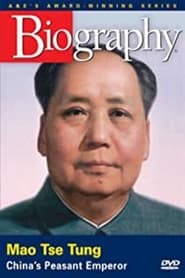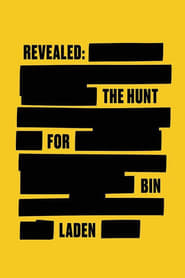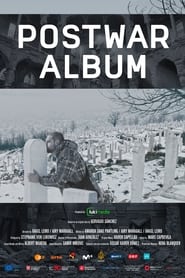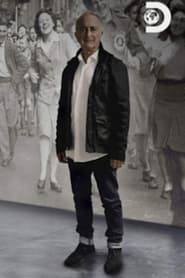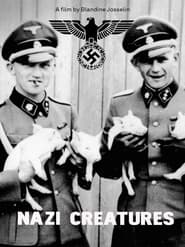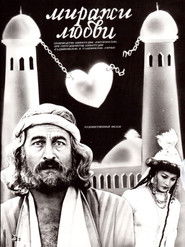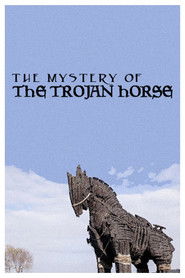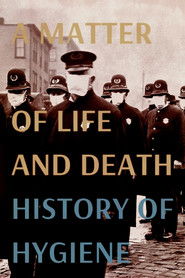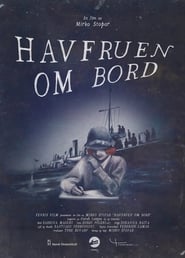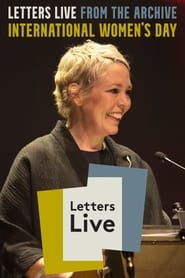Top Rated History Movies - Page 329
-
The SS: A Barbaric State
2019
star 6.5Nuremberg is where Nazi congresses were held. In the city where Hitler gathered huge crowds of fanatics, the court hosted in 1945 the greatest trial in History. The Allied victors judged those responsible for the Third Reich. Among the defendants are the Führer's closest surviving accomplices. But not only them: defendant number 27 is not even a man. It is an entire organization: the SS were a state within the state – which ruled all the police – with its own army, within the Nazi regime. -
The Devil Wears Ju-Ni Hitoe Kimono
2020
star 3Rai, a frustrated student and part-time labourer, is wandering home after setting up a museum exhibition on the classic novel "The Tale of Genji". There is a blinding flash of light and he finds himself mysteriously time-slipped into the Heian period, the setting for the famous novel. Armed with a pamphlet on the history of the period and a bottle of headache tablets he passes as an onmyoji (magical protector of the capital) and is hired by the emperor’s wife Nyogo Kokiden. Fearless and coldly analytical she plots to have her son take over the Emperor’s position. Rai is expected to help. This light-hearted historical fantasy is a treat for lovers of sumptuous kimono. -
Interview Between Napoleon and the Pope
1897
star 4This reconstruction refers to a meeting that allegedly took place on 25 November 1804 at Fontainebleau between Pope Pius VII and Napoleon to discuss the coronation. -
Nehru
1984
Nehru
1984
star 4Divided into three parts — The Awakening, The Struggle, and Freedom — this is a biographical film on Pandit Jawaharlal Nehru, the first Prime Minister of independent India. Relying on Nehru's writings and speeches, the film traces the evolution of Nehru from his birth through his life. It also deals with the effect of history on Nehru and in turn his impact on the world. -
Revealed: The Hunt for Bin Laden
2021
star 4The History Channel marks the 20th anniversary of 9/11 with a new groundbreaking documentary about the biggest manhunt in human history. This documentary draws on interviews and stories told in the Museum's special exhibition of the same name, and features interviews with Jan Seidler Ramirez, chief curator and executive vice president of collections, to tell the sweeping tale, linking policy, intelligence, and military decision-making as they converged on a mysterious compound in Abbottabad, Pakistan. -
Postwar Album
2021
Postwar Album
2021
star 7Winter 2019. Spanish war photographer Gervasio Sánchez, who documented with his camera the long and tragic siege of Sarajevo during the Bosnian War (1992-95), returns to the city in search of the children he met among the ruins, those who survived to grow up, live and remember. -
Letters
2021
Letters
2021
star 9LETTERS, a dramatic historical fiction written by Mrs. Evelyn Merritt in 2010, tells the story of U.S. soldiers and their loved ones through their correspondence beginning with the Civil War and ending with the War in Iraq. Sahuarita High School students adapted the Readers’ Theatre play into a movie, reasoning the student actors would be kept safe from Covid-19 by filming them individually, and afterward the footage could be reassembled into a screenplay following the original dialogue. -
The 1001 Faces of Palmyra
2021
star 7Two thousand years ago, it was a flourishing city in the middle of what is now a Syrian desert. At the crossroads of trade routes, Palmyra attracted caravanners from Mesopotamia, India and China. In what remains of its ruins, rediscovered by Europeans in the 17th century, its numerous necropolises bear witness to a prosperous past. Carved in limestone in the first centuries of our era, the faces of the representatives - men, women and children - of its greatest families adorn the walls of its tombs. Since 2012, Danish archaeologist Rubina Raja has been leading a long-term project to find, document and retrace the family trees and daily life of these Palmyrenians. -
Tony Robinson's VE Day Minute by Minute
2020
star 7.5Tony Robinson’s VE Day: Minute By Minute will take a unique look at a pivotal day in the history of the modern world, delving into the key events that made VE Day such a momentous twenty-four hours. This is the story of what happened on that most celebrated and important day, including original interviews with historians and veterans who tell their stories and share their first-hand experiences. Using unseen archive footage and stills, plus never told accounts from veterans who were there, this one-off special will chart the moment the clock struck midnight, to 24 hours later, when fighting officially stopped across Europe. Up and down the country it was dawning on people that they were waking up not with fear or anxiety, but with relief and excitement. This was a Great Britain no one had experienced for six years. A Britain at peace. At almost no notice street celebrations were being prepared and tens of thousands were flocking to London and other city centres. -
Architects of Ancient Arabia
2021
star 9.5Unearthing the previously unknown aspects of the ancient history of Saudi Arabia, experts uncover traces of a society from more than 7,000 years ago. Archeologists unearth evidence for an ancient ritual, completely unexpected and extraordinary as they continue to piece together Al Ula's rich history in time to welcome guests from around the world, as specialist teams seek to decipher the activities associated with ancient stone structures, with their findings aiding to deepen the historical legacy of the country, and of ancient Arabia. Using multiple modern technologies to record tens of thousands of sites, they choose some to explore in greater detail, to begin piecing together a new chapter in the story of human civilisation. -
Nazi Creatures
2017
Nazi Creatures
2017
star 7Hitler, Goring, Himmler...the three architects of the Final Solution. But these three men, like many other high ranking Nazis, shared another obsession: a fascination with animals. Whether it was experiments to create the purest bred of horse or trying to resurrect the long extinct wild auroch, they sought to control and purify the animal kingdom We investigates these secret Nazi programmes. -
Mirages of Love
1987
Mirages of Love
1987
star 7"Mirages of Love" is a Soviet-Syrian film directed by Tolomush Okeyev about the fate of Mani, a medieval oriental master. -
Two Portraits of MIYAGINO
2010
star 7.5In Edo-era Japan, a ukiyo-e artist languishes in his master’s shadow. Creatively stifled, he finds consolation in the company of a prostitute, and becomes entangled in a love triangle. A mystery emerges involving two portraits and the sudden disappearance of the artist Sharaku. Helmed by Cannes-selected director Tatsuji Yamazaki, the film employs kabuki-inspired sequences and stylised sets. -
The Mystery of the Trojan Horse
2021
star 7The story of the Trojan Horse is probably one of the most famous stories ever told: after ten years of bloody war, the Greek coalition decides to lift the siege and depart, but not before leaving at the gates a huge wooden horse, which the Trojans confidently lead into the city. A few hours later, the once invincible Troy goes up in flames. What exactly happened? Is this myth true or false? -
A Matter of Life and Death: History of Hygiene
2021
star 6.5Hygienic habits are as old as the various human civilizations; but each era establishes its own customs: whether private or public, everywhere and at all times, methods of personal cleanliness have depended on cultural conventions, religious morals, political ideologies and economic interests; because the control of basic hygiene has also been and is one more tool in the infinite exercise of power over the masses. -
Mermaid on board
2021
Mermaid on board
2021
star 9In 1927, with a broken heart as luggage, the young poet Norah Lange voyages on a Norwegian freighter from Buenos Aires to Oslo as the only female passenger. The film reimagines in a poetic way the trip and the power struggles Norah is forced to negotiate with the crew, as the crossing of the ocean leaves an indelible mark on Norah’s life and career. -
Book Hunters
2017
Book Hunters
2017
star 8When chaos reigns, while barbaric and fanatical rulers, both ecclesiastical and secular, systematically burn entire libraries, book hunters, secret heroes of history, travel the world saving and copying texts, threatened by the madness of censors, with the noble purpose of preventing the ultimate loss of human knowledge. -
Letters Live from the Archive: International Women’s Day
2021
star 8Celebrate International Women’s Day with this brand new inspiring film from LETTERS LIVE. In “LETTERS LIVE from the Archive: International Women’s Day”, remarkable letters are read by a diverse array of outstanding luminaries, including stunning performances from Olivia Colman, Gillian Anderson, Daisy Ridley, Caitlin Moran, Rose McGowan, Adwoa Aboah, Louise Brealey and more. Plus music from Roxanne Tataei.
 Netflix
Netflix
 Amazon Prime Video
Amazon Prime Video
 Apple iTunes
Apple iTunes
 Apple TV Plus
Apple TV Plus
 Disney Plus
Disney Plus
 Google Play Movies
Google Play Movies
 Paramount Plus
Paramount Plus
 Hulu
Hulu
 HBO Max
HBO Max
 YouTube
YouTube
 fuboTV
fuboTV
 Peacock
Peacock
 Peacock Premium
Peacock Premium
 Amazon Video
Amazon Video
 The Roku Channel
The Roku Channel
 AMC+
AMC+
 Kocowa
Kocowa
 Hoopla
Hoopla
 The CW
The CW
 Vudu
Vudu
 Starz
Starz
 Showtime
Showtime
 PBS
PBS
 Pantaflix
Pantaflix
 FXNow
FXNow
 Tubi TV
Tubi TV
 Kanopy
Kanopy
 Comedy Central
Comedy Central
 Crunchyroll
Crunchyroll
 Microsoft Store
Microsoft Store
 Redbox
Redbox
 Sun Nxt
Sun Nxt
 ABC
ABC
 DIRECTV
DIRECTV
 Crackle
Crackle
 Fandor
Fandor
 Plex
Plex
